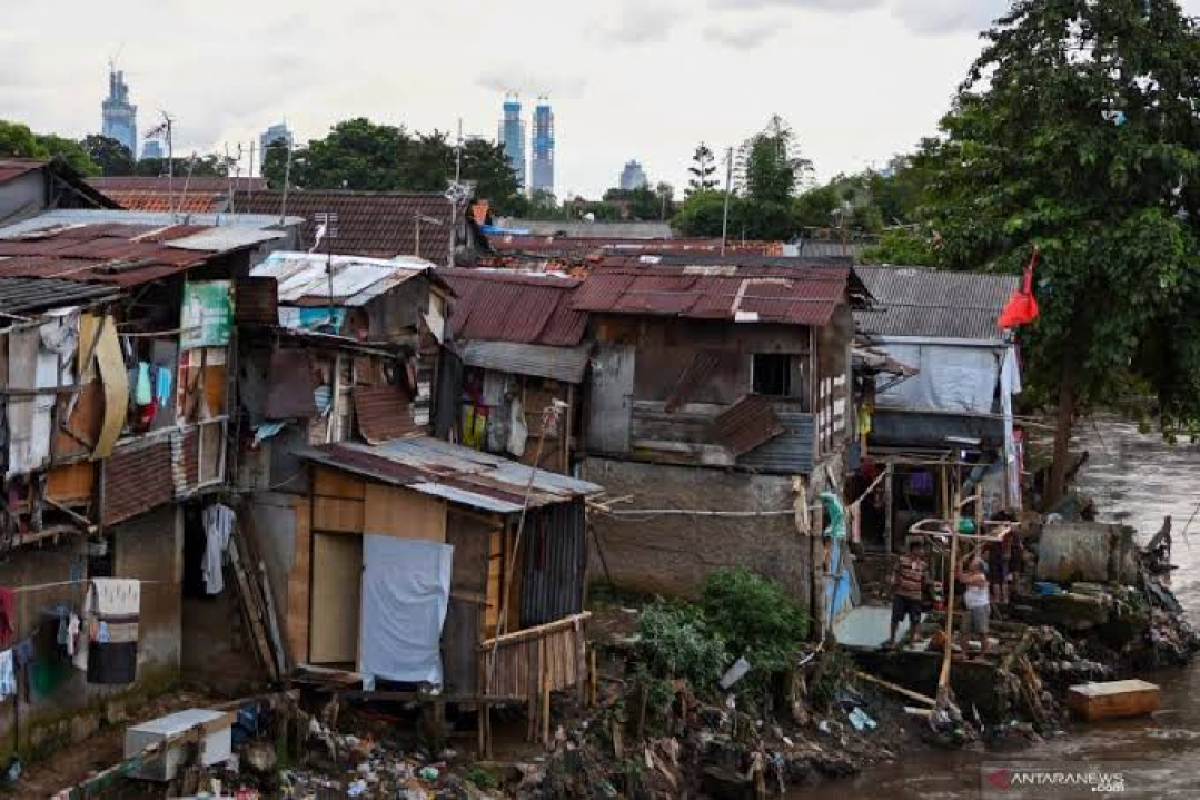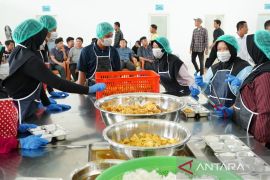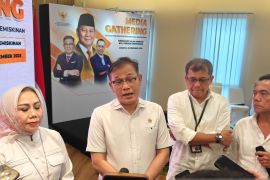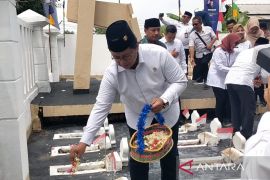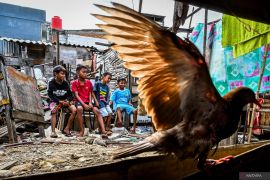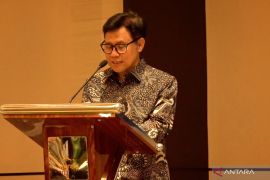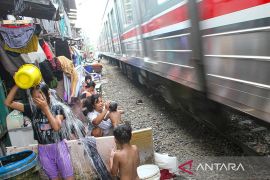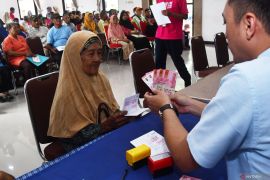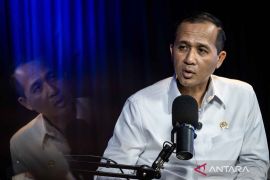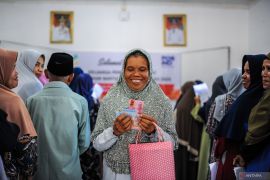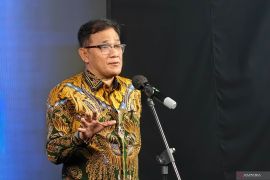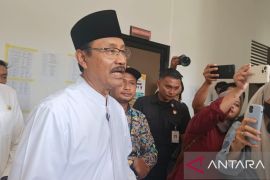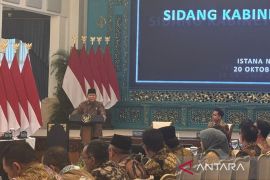Owing to the pandemic’s impact on the economy, global poverty could increase for the first time since 1990, representing a reversal of approximately a decade of global progress in reducing poverty, according to a study by the United Nations University – UNU Wider.
The World Bank, in its Poverty and Shared Prosperity Report, published in October, 2020, confirmed that the poverty reduction progress has slowed down owing to the impact of COVID-19.
The pandemic is estimated to push an additional 88 million out of 115 million people into extreme poverty in 2020, with the total rising to as many as 150 million this year, depending on the severity of the economic contraction, according to the report.
“The pandemic and global recession may cause over 1.4 percent of the world’s population to fall into extreme poverty,” World Bank group president David Malpass said.
Indonesian Vice President Ma'ruf Amin recently pointed out that an increase in the poverty rate and a wider social gap were among the earliest-to-surface impacts of the COVID-19 pandemic.
He highlighted the numerous measures taken by the government through the COVID-19 Handling and National Economic Recovery Program (PEN) to mitigate the impact of the pandemic on poverty and vulnerability.
In fact, the government has claimed that PEN, especially social protection, in 2020, rescued over five million people from poverty amid the pandemic.
"This means that the PEN program throughout 2020 is believed to have rescued more than five million people from becoming the new poor," chief of the fiscal policy board at the Finance Ministry, Febrio Nathan Kacaribu, said on February 16, 2021.
Related news: Economic recovery program rescued five million people from poverty
Social security programs have been the main instrument for protecting poor and vulnerable people during the pandemic and have had a significant impact on poverty mitigation. The programs include social security and health access programs, cash transfers, unemployment benefit programs, and increased access to digital infrastructure, particularly to support access to education.
To maintain people's livelihoods, the government has also provided support to less fortunate communities by taking measures such as lowering electricity tariffs, relaxing taxes, easing credit, creating new jobs, and distributing daily basic necessities, such as food parcels containing rice, cooking oil, and sugar.
Kacaribu noted that the government's intervention protected the consumption of not only the poor, but also those from the middle-income bracket.
Meanwhile, the Gini ratio, a statistical measure for gauging economic inequality in a population, rose slightly by 0.005 points to 0.385 in September, 2020 from 0.380 a year ago. The Gini ratio climbed up due to a rise in the number of people living in poverty due to the COVID-19 pandemic.
During an online press conference, Statistics Agency (BPS) chief Suhariyanto also confirmed that the spike in the poverty rate due to the pandemic could be curbed owing to the government's social protection programs.
The number of people living in poverty rose by 2.76 million to 27.55 million, accounting for 10.15 percent of the total population, in September, 2020, compared to 24.79 million, or accounting for 9.22 percent of the total population, in September, 2019. This means the poverty rate rose by 0.97 percent.
The BPS computes the country's poverty rate twice a year in March and September. In March, 2020, the number of Indonesians living in poverty stood at 26.42 million, or 9.78 percent of the total population.
The agency noted that the rise in poverty rate in urban areas was far higher than that in rural areas in September, 2020. The urban poverty rate rose 1.32 percent to reach 7.88 percent, while the rural poverty rate increased by 0.60 percent to 13.20 percent as compared to September, 2019.
The BPS also noted that the monthly per capita income in September, 2020 stood at Rp458,947. This means the monthly per capita income of poor households in the country reached Rp2,216,714 on the assumption of each household size being 4.83. Hence, despite an increase in the number of poor people, the figure was not as high as that projected by several international institutions, Suhariyanto pointed out.
Citing an example, he remarked that the World Bank in June, 2020 had forecast the number of poor people in Indonesia would increase in the range of 10.7 percent to 11.6 percent amid the pandemic in the absence of government intervention.
"The increase in September, 2020 was only 0.97 percent. This suggests that the various social protection programs launched by the government during the pandemic have helped, (and) especially (benefited) people from the low-income group," he affirmed.
The coverage of social protection programs was raised to 60 percent from 40 percent of the lower-income bracket, Suhariyanto revealed.
The government allotted Rp695.2 trillion in budget funding for PEN in 2020, while the funding realization reached 83.4 percent, or Rp579.78 trillion. Of the total budget funding, Rp230.21 trillion was allocated for social security programs, and the realization reached Rp220.39 trillion.
To further improve social protection programs, the government will integrate several social assistance programs offered by different ministries and institutions, National Development Planning Minister/ National Development Planning Board (Bappenas) head, Suharso Monoarfa, stated.
"We will rearrange and integrate various social assistance programs under some ministries and institutions and place the programs under a strategic program of social assistance," Monoarfa informed at the Presidential Office after a recent limited meeting on reforming the social protection system, led by President Joko Widodo.
"To make those forms of social assistance effective, we will evaluate the validity of the programs at the ministries and institutions," he affirmed.
Monoarfa said President Widodo has tasked Bappenas with streamlining the social protection system. "Once again, effectiveness of the disbursal of social assistance and social insurance is linked to the database," he remarked.
The minister stated that Bappenas will re-design the social assistance program integration by updating data. “(We will use) Digital-based data to have a high accuracy. We realize the need to work on some issues to bring about an improvement in terms of data, the accuracy of data on eligible receivers. Data is an inevitable factor in the implementation of social protection through social assistance programs," he expounded.
Bappenas is targeting to finalize the draft on the integrated social assistance program in 2024.
Monoarfa noted that the social protection system in Indonesia is of two kinds. "First, social assistance provided by the government without requirement to pay a premium. Second, social insurance where people can derive the benefits by paying a premium," he stated.
The minister confirmed that the government has also provided assistance to disburse social insurance payment to vulnerable families classified as poor and very poor.
"What is the goal of the social protection system? It is aimed at reducing the poverty rate, especially at the level of extreme poverty that has reached 2.5 to 3 percent in Indonesia," he remarked.
President Widodo has set a target of eradicating extreme poverty to zero percent by 2024, according to Monoarfa.
The government’s efforts to help the poor suffering from the impact of the COVID-19, however, have been marred by the arrest of Social Affairs Minister Juliari Batubara, who was entrusted by President Widodo to handle most of the social security programs for the poor, said observers.
Batubara was arrested by the Corruption Eradication Commission (KPK) on December 6, 2020, for allegedly receiving US$1.2 million in kickbacks from two contractors tasked with distributing aid to the poor impacted by the COVID-19 pandemic. During the arrest, KPK officers also confiscated millions of dollars in cash in three different currencies.
The anti-graft agency suspected that the money was meant for Batubara, who awarded the two companies with a contract to distribute cash and basic necessities to 10 million poor families impacted by the pandemic. (INE)
Related news: Indonesia's poverty rate to touch 11.5 percent amid COVID-19: VP
Related news: Four major projects to lower unemployment, poverty rates in 2021
EDITED BY INE
Editor: Suharto
Copyright © ANTARA 2021
